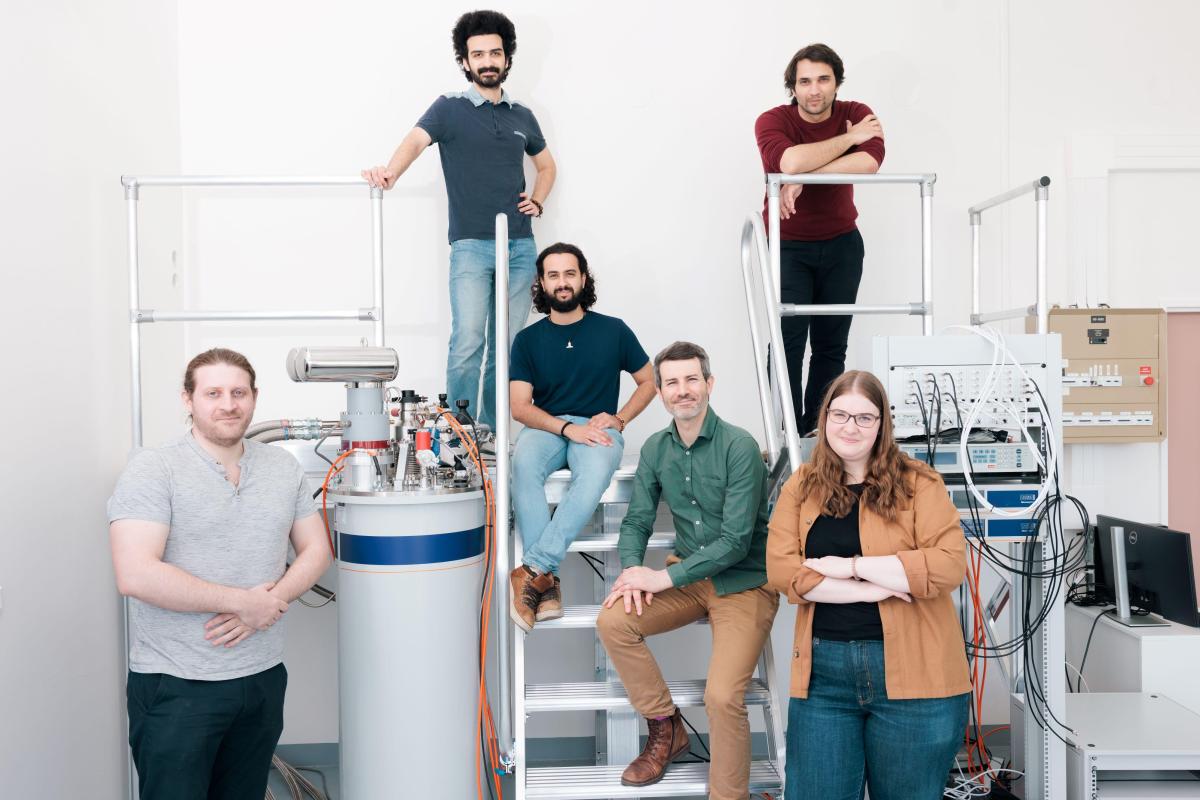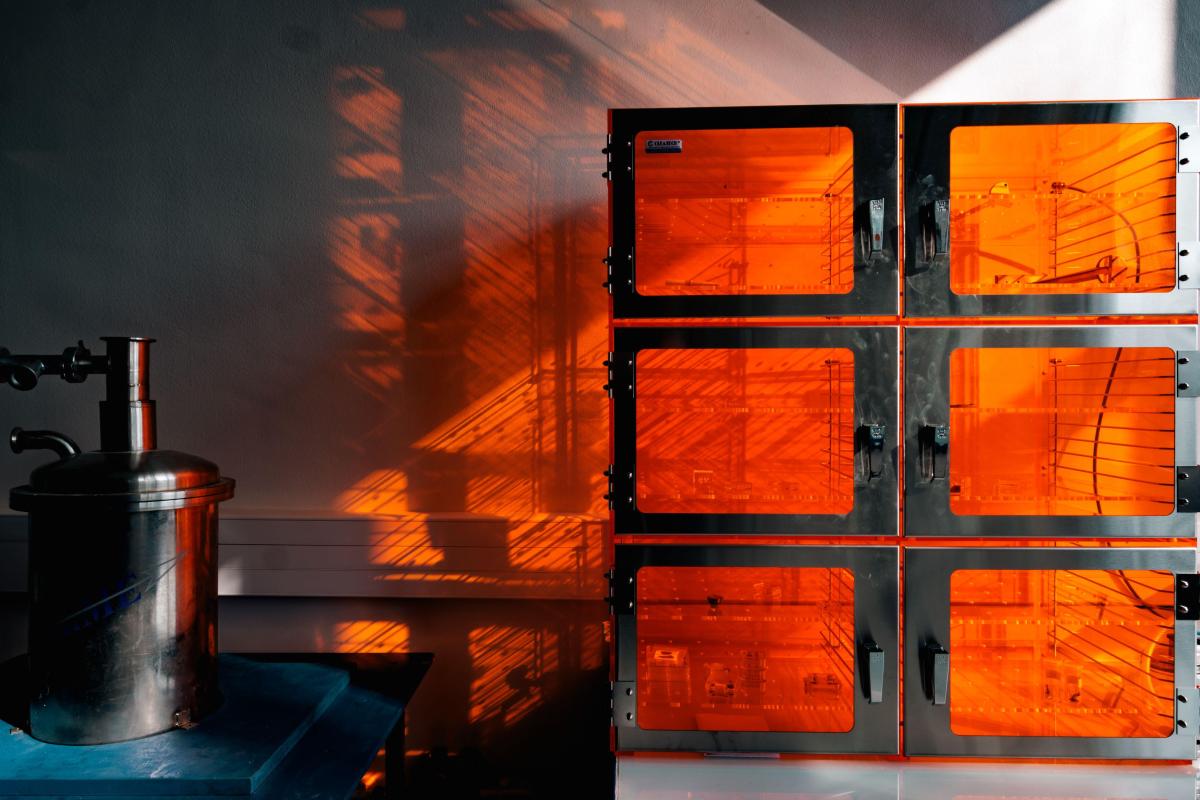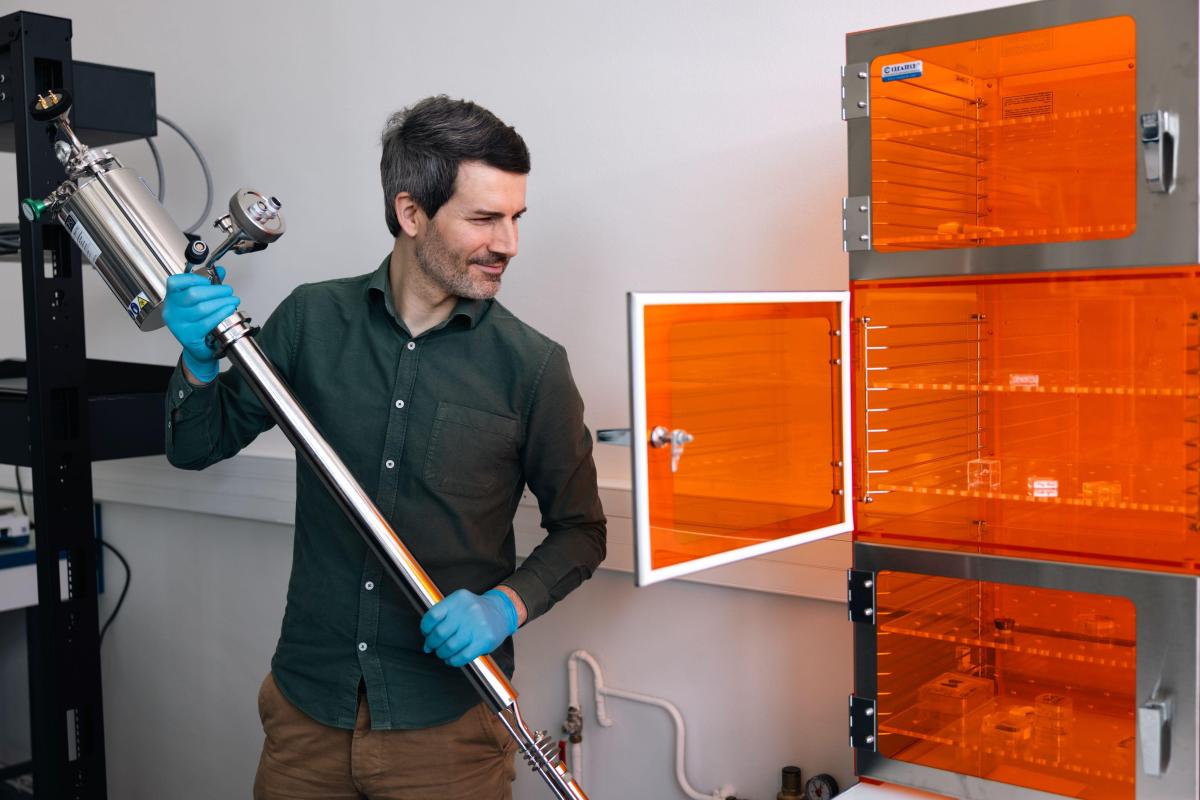Applications
 Part of the Oxford Instruments Group
Part of the Oxford Instruments Group
Expand
Collapse
In the world of experimental quantum physics, understanding how electrons behave in exotic and quantum materials is one of the field’s biggest questions. Just south of Paris, at the École Polytechnique, Dr Gaël Grissonnanche and his research group, Quantum Materials in Extreme Conditions, are probing these mysteries in their new state of the art lab.
Dr Grissonnanche's research focuses on quantum materials, particularly superconductors, which exhibit properties that can only be explained through quantum mechanics. These aren't the conventional materials we encounter in everyday life; they display exotic behaviours that researchers like Dr Grissonnanche and his team are working to comprehend fully.
The field of superconductivity research has a rich history. Since its first discovery in 1911, the field has expanded massively from simple superconducting metals to high-temperature copper oxide “cuprate” superconductors, so-called “unconventional”.

Photo by J. Barande © École polytechnique
“These quantum materials that exhibit superconducting properties are not yet fully understood. We can observe the superconductivity, but we cannot explain its origin,” explains Dr Grissonnanche. “We are exploring the why and the how. Why are the electrons behaving in ways that lead to new exotic properties in the material, and how can we explain the physics?”

Photo by J. Barande © École polytechnique
The ultimate goal is ambitious yet clear: by understanding the fundamental behaviours of electrons in these materials, Dr Grissonnanche and his team hope that one day we can engineer superconducting materials that could profoundly impact modern life.
Superconductors present a more efficient way of generating, storing, and carrying electricity compared to the copper and aluminium wires typically used. Before setting up the lab at the École Polytechnique, Dr Grissonnanche completed his PhD in Québec, Canada, on unconventional superconductors. Much of his research was dedicated to energy optimisation.
Home to a large number of dams, the region of Québec generates a lot of hydroelectric power, but when carried to the consumer, a lot of this power is lost through resistance. By replacing the cables with superconductors, resistance drops to zero resistance and therefore resulting in close to zero power loss.




Photos by J. Barande © École polytechnique
Superconductors are also essential components for generating the powerful magnetic fields needed to contain plasma at millions of degrees in fusion reactors, potentially unlocking a new clean energy source. They could also be used to store energy.
“Superconducting magnets, like the ones built by Oxford Instruments, create a high magnetic field by storing large amounts of energy,” Dr Grissonnanche told us. “But a lot of energy is also used to keep the magnet cold to maintain its superconducting properties. With superconductors working at room temperature, they would operate more like batteries.”
Beyond energy, superconductors are part of the leading technological development for quantum computing, and the quantum materials Dr Grissonnanche and his team are researching may one day lead to better quantum bits.
Rather than simply measuring electrical properties, Dr Grissonnanche's team specialises in thermal transport experiments. They introduce heat into materials and observe how it travels through them.
This made Oxford Instruments a natural partner for the project, given its decades of experience in delivering reliable, world-leading Cryofree®
magnet systems. Dr Grisonnanche selected the ProteoxMX and the TeslatronPT to support his teams’ complex experimental method, each equipped with a high field 14 Tesla superconducting magnet. Having both these systems with common magnetic field capability makes for a powerful and consistent toolset for experiments across the widest possible temperature range.

Photo by J. Barande © École polytechnique
"Thermotransport experiments are demanding and usually a challenge in extreme conditions", Dr Grissonnanche explains. "But thermal properties of materials are also simpler to interpret when you go to temperatures of 10 mK."
The ProteoxMX dilution refrigerator is a powerful tool in this endeavour as it reaches ultra-low temperatures of less than 10 mK, where quantum behaviours become more apparent, making them easier to observe and, ultimately, to understand.
Working in conjunction with the ProteoxMX is the lab’s TeslatronPT cryomagnetic system. “We use the TeslatronPT for around 80% of our experiments. It is an absolutely essential piece of equipment because it allows us to turn superconductors on and off using its high magnetic field. By doing this, we can better control quantum phenomena and understand the electron’s behaviour better”.
Beyond its technical advantages, Dr Grissonnanche chose the ProteoxMX for its flexibility and potential for future upgrades, made possible by its Secondary Insert capability. The lab is still in its early days, but the research team has ambitious plans for the future.
“We are really proud of the lab we’ve built at the École Polytechnique, and the ProteoxMX will support its future development. Investing in highly technical equipment like the Proteox is a big decision - as researchers, we have lots of considerations that need to be taken into account - but it’s an investment into our current research scope and our future scalability.”
Named after the Ancient Greek sea god Proteus, famed for his ability to change shape and transform, the Proteox family of dilution refrigerators embodies this spirit of adaptability with options to upgrade, build and expand.
The lab at the École Polytechnique represents part of a significant investment in fundamental quantum research in Europe, showcasing the globally recognised standard of European quantum research.
The lab and the work Dr Grissonnanche and his team are undertaking demonstrate Europe's commitment to advancing fundamental physics and the opportunities in countries such as France to be involved in quantum research and be part of some of the most exciting discoveries of our generation.
Contact us to learn more about the Proteox family of dilution refrigerators